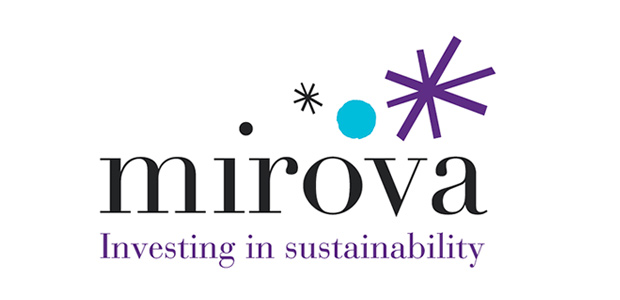- The New Standard for Business Finance Industry
- Practical Tips to Help Finance Regenerative Ag Projects
- In restaurant finance, optimism abounds for 2025
- Graco Provides Unaudited Supplemental Financial Information Reflecting its New 2025 Reporting Segments
- Canadian Foreign, Finance Ministers Meet Trump’s Team On Tariffs
On 17 December 2024, the EU Platform on Sustainable Finance (the
“Platform”), an advisory body to the European Commission
(the “Commission”), has published a briefing note to the Commission, outlining
their proposals for a new categorization system for sustainable
finance products (the “Proposal”). This is intended to be
in replacement of the current regime under the Sustainable Finance
Disclosure Regulation ((EU) 2019/2088, “SFDR”).
We outline below:
You are viewing: Sustainability-related Disclosures For All Funds Proposed By EU Platform On Sustainable Finance – Fund Finance
- Fund categories: the headline points of the
proposed fund categories recommended by the Platform; - Disclosures for all funds: the proposed
metrics to be reported on by all funds (regardless of any
commitment to sustainability); and - Private markets: the key considerations made
in relation to private markets’ funds.
Fund categories
In summary, the Platform recommends categorizing funds as
follows:
- Sustainable:
- The sustainable category is applicable to funds that contribute
to a sustainable investment objective through EU
Taxonomy‑aligned investments or sustainable investments with
no significant harmful activities (“DNSH”) for a minimum
proportion of assets. - There is a significant elevation of the use of the EU Taxonomy
((EU) 2020/852) in this proposed category, in line with the
European Supervisory Authorities’ Opinion which we reported on
here. Essentially, the Platform recommends
that if an economic activity is listed in the EU Taxonomy, then the
requirements, including the technical screening criteria, of the EU
Taxonomy must be met for it to be considered a sustainable
investment. The more flexible definition of “sustainable
investment” under Art. 2(17) of the SFDR can only be used if
the economic activity is not listed in the EU Taxonomy. The
Platform sets out “the more the EU Taxonomy is developed, the
less need there will be for the use of the SFDR sustainable
investments, ultimately leading to the full replacement by the EU
Taxonomy”. Their rationale is that with multiple definitions
of sustainable investment, it creates “confusion,
inefficiencies, and ultimately undermines the overarching goal of
the Sustainable Finance package”. - For the DNSH test, the principal adverse impacts
(“PAIs”) must still be assessed, with an emphasis on the
PAIs relevant to the sustainability features of the fund. - The Paris-aligned Benchmark exclusionary criteria must also be
complied with for this category. - Further sustainability-related binding elements could be
implemented, for example, on engagement. - For all binding elements of the sustainable investment strategy
pursued, there must be corresponding sustainability indicators
reported on, alongside reporting on EU-Taxonomy alignment and all
mandatory PAIs. - There seems to be a drive to report on a more granular basis
with regards to PAIs too, where managers will be required to
“explain deficient or poor PAI indicator performance and how
this is in line with the principle that the remainder should not
undermine the sustainability objective”.
- The sustainable category is applicable to funds that contribute
- Transition:
- This category is intended where there are investments or
portfolios supporting the transition to net zero and a sustainable
economy, avoiding carbon lock‑ins, per the Commission’s
recommendations on facilitating financing for the transition to a
sustainable economy. - There are various options to commit to a transition, including
by complying with decarbonisation according to the Benchmark
Regulation ((EU) 2016/2011), tracking the Climate Transition
Benchmarks or Paris-aligned Benchmarks, or committing to EU
Taxonomy-aligned CapEx or transitional activities. Further options
include committing to investments with transition plans or
science-based targets, engaging with companies with an escalation
(and ultimately divestment) plan to commit to a transition plan,
and transitioning real estate and infrastructure investments with
portfolio‑level commitments. The option(s) committed to must
be made binding elements of the investment strategy. - The difference in the exclusion criteria compared to the
sustainability category is that the criteria set out in the Climate
Transition Benchmarks must be met. - Sustainability indicators must be reported on with regards to
whichever option is committed to, alongside EU-Taxonomy alignment
and reporting on all mandatory environmental PAIs if the focus is
on environmental transition, or all mandatory social PAIs if the
focus is social transition (or both).
- This category is intended where there are investments or
- ESG collection:
- Investments must be committed to one or more “material
sustainability features” with flexibility of what this might
be, including:
- Effective reduction of the investment universe, e.g., by 20% in
line with the French regulator’s, the AMF’s,
expectations - Investing in funds that themselves are sustainable, transition
or ESG collection - Investing in companies without transition plans with a credible
engagement strategy, including an escalation (and ultimately
divestment) plan to commit to a transition plan - Percentage of assets committed to year-on-year improvements or
to be better than a reference benchmark
- Effective reduction of the investment universe, e.g., by 20% in
- Other assets must not undermine the sustainability features
committed to in the binding elements. - Adherence to minimum exclusions under the Climate Transition
Benchmark criteria (although this is adjusted).
- Investments must be committed to one or more “material
- As with the other proposed categories, the commitments must be
binding on the investment strategy and have respective
sustainability indicators. - EU Taxonomy alignment must be reported on, and all mandatory
environmental PAIs must be reported if the focus is on
environmental characteristics, and all mandatory social PAIs must
be reported if the focus is on social characteristics (or both).
Notwithstanding this, there are certain core PAI indicators that
must be reported on, as set out below under ‘Minimum disclosure
for all funds’.
All other funds should be identified as unclassified
products, the Platform recommends — nevertheless
with a set of mandatory sustainability disclosures, as set out
below. Further, a disclaimer should state that (i) the fund is
unclassified; (ii) it does not fulfil the standards required for a
categorised financial product; and (iii) any ESG characteristics or
sustainable or transition features must only be described in the
legal documentation.
There is no separate impact investing category, however, the
Platform sees merit in the European Commission analysing how impact
investing funds could be considered in the categorisation. This is
in contrast to the UK’s labelling regime under the
Sustainability Disclosure Requirements, which does have a specific
impact label.
Minimum disclosures for all funds
In a marked departure from the light-touch current Article 6
fund disclosure requirements, the Platform proposes that all funds
are required to report on:
- EU Taxonomy alignment (revenue and CapEx); and
- PAIs on GHG emissions, carbon footprint, GHG intensity of
investee companies and UN Guiding Principles or OECD Multinational
Enterprises Guidelines.
There seem limited options in the Proposal for not providing
such disclosures, with the Platform instead noting that estimates
could be used.
Private markets
There is an acknowledgement at the front of the Proposal that it
“puts retail investors and their needs at its core”.
There are also scattered references to private markets, however,
including:
- PAIs: the Platform notes that PAIs are often
not tailored for private market investments like infrastructure
debt and equity, private equity and debt, venture capital, real
assets and indirect investments. The Platform sets out it would
welcome guidance from the Commission on how these investments can
be assessed via the PAIs, for example, by providing examples of
indicators that can be used as a proxy for indicators commonly used
for listed asset classes. Similarly, the Platform recommends
further analysis on setting thresholds for PAIs in private market
funds. - Sustainability indicators: as set out in the
summary of the proposed categories, there are many suggested
indicators; however, the Platform acknowledges that particularly
for non‑listed assets such as real estate and private market
investments there could be a need for the use of tailored
indicators. - Ramp up/wind down: whilst there is the concept
of mandatory commitments which need to be maintained throughout a
fund’s lifecycle, there is the awareness from the Platform that
the mandatory commitment could be applicable in a timeframe
specified with reference to private market funds’ ramp up and
wind-down phases.
Application to Overseas Funds marketed in the EEA by non-EEA
Managers
We note there is no direct coverage of the applicability of the
Proposals to overseas funds marketed into the EEA and therefore
presume that a marketing notification in one or more EEA Member
States under a national private placement regime will bring funds
managed by non-EEA managers into the scope.
Next steps
There is no committed timeline for the European Commission to
consider the Platform’s Proposal or for SFDR 2.0 to be
implemented. However, the influential Platform’s Proposal will
certainly trigger momentum on developments.
The content of this article is intended to provide a general
guide to the subject matter. Specialist advice should be sought
about your specific circumstances.
See more : 10 stocks retail investors craved in 2024
Source link https://www.mondaq.com/unitedstates/fund-finance/1562132/sustainability-related-disclosures-for-all-funds-proposed-by-eu-platform-on-sustainable-finance
Source: https://summacumlaude.site
Category: News







